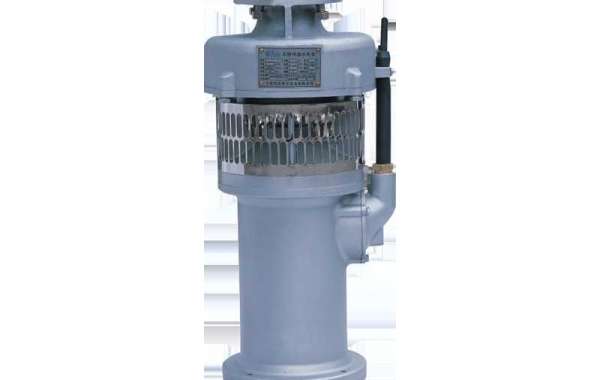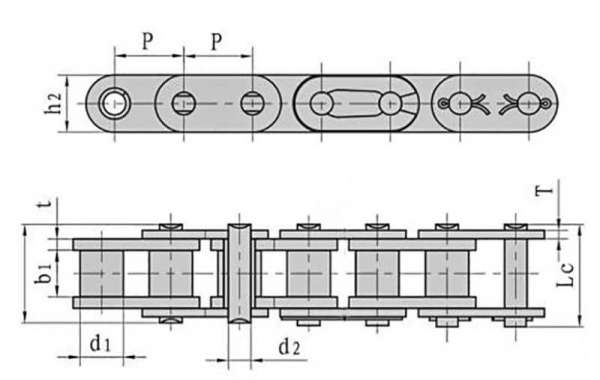When performing reverse well construction operations in coal mines, the use of mechanical drilling has good quality, fast speed, small damage to surrounding rocks and high efficiency, low labor intensity, and more importantly, the safety of employees is reliably guaranteed, which is completely avoided. Workers are at risk of gun smoke and roof fall, so Water Well Drilling Tools are widely used in coal mine anti-well construction operations. In actual work, there are many process details that need to be dealt with before the drilling work can be carried out smoothly. These process issues include: preparation before drilling, rig installation, pilot hole opening, rig deviation control, pilot hole anti-blocking, and drill rod replacement Connection, reaming and opening, etc., among them, the five technical problems of pre-drill preparation, pre-drill installation, drilling control deviation and guide hole anti-blocking, and drill pipe replacement are more prominent.
- Preparation before drilling
1. Excavation of the chamber: According to the inclination of the well and the model of the drilling machine, the floor of the chamber and the pouring chamber are excavated. The floor of the chamber is required to be flat. When the floor is poured, the anchor bolt installation holes (secondary pouring) should be left for the installation of the drilling rig. In order to discharge the rock slag discharged when the pilot hole is drilled, a 300×300 mm (long) drainage ditch should be poured when pouring the foundation. The drainage ditch should have a certain slope to facilitate slag discharge. If there is no ditch in the roadway, a water pit must be dug to install the submersible pump.
2. Slag discharge method: Determine the pressure and flow of flushing fluid according to the well depth. Coal mines generally use clean water to discharge slag. The water pressure is about 2Mpa. If the water pressure is small, a hydraulic pump can be installed to ensure that there is enough water pressure to discharge the slag when the pilot hole is drilled. - Stable installation of drilling rig
1. Before drilling, the water well drilling tool must first be fixed on the foundation. After the drilling rig is leveled, the upper support is extended to the roof of the roadway with an extension rod to prevent the body from shaking during the drilling process.
2. Technical requirements and precautions: After selecting the drilling site, carry out construction according to the main machine foundation drawing. The foundation must be level, especially the upper plane level of the secondary irrigation reserved on the foundation pit is particularly important, and there must be sufficient For the strength of the main frame, the foundation frame is re-watered with 8 anchor bolts. The connection between the bolt and the anchor plate of the drilling machine must be firm, the thickness of the foundation concrete should not be less than 300mm, and the strength should not be less than 200# standard strength. For the soft surrounding rock of the floor, the area and thickness of the foundation should be increased, and the thickness of the concrete can be increased to more than 700mm. The bottom plate of N+1317 gangue bunker is tuff, which is easy to soften when encountering water, and the thickness of concrete is selected to be 700mm; the foundation is deformed during the drilling process. - Deviation control of drilling rig
1. The rig is skewed. In drilling engineering, due to various reasons, the center line of the drilled hole intersects with the main axis of the rig or the mainframe is offset so that the two lines intersect, so that the rig will produce deflection. If the deflection rate is during drilling (the rig pilot hole (The slope of the centerline and the axis of the main axis of the drilling rig) exceeds the allowable value, and deflection will occur. The working state of the water well drilling tool under normal conditions and deflection is different. To reach the normal drilling speed after deflection, the required push-pull force and torque force are greatly increased, and the vibration is intensified. There is an obvious feature of the deflection of the drilling rig. When the drill pipe is replaced, the lower slip will not go up and the drill pipe cannot be replaced. The deflection of the rig will cause the drill to fail to reach the predetermined location and cause deflection holes.
2. Deviation control technology. According to practical experience, the implementation of the following measures can effectively prevent the occurrence of drilling deflection rate: (1) Take correct and effective stable installation. (2) Open the hole with short drill pipe, low axial pressure and slow drilling speed until the first stable drill pipe enters the pilot hole. The axial pressure can be increased as appropriate to increase the drilling speed. After the drilling depth exceeds 3m, Press again to drill according to normal parameters. (3) The drill rod of the rig must be tightened with the connecting wire of the drill bit. (4) Use guides for guide openings. (5) Add one stabilizer every 10m during drilling. (6) Pay close attention to changes in rock formations during drilling, and drilling in heterogeneous rock formations due to low-speed drilling. (7) Check frequently when drilling, and fasten loose stable components in time. If over-deflection occurs, it must be adjusted in time. - Guide hole anti-blocking
1. Reasons for anti-blocking: The selected slag discharge method has insufficient slag discharge capacity, and insufficient water pressure and flow rate are the main reasons.
2. Solution: The drilling speed should match the slag discharge capacity, and the slag discharge capacity should be greater than the cuttings generated by drilling.
5. Replacement of drill pipe
1. The process of changing the drill pipe is very demanding for the drill rig operators and the operator for changing the drill pipe, requiring them to be cautious, very skilled and tacit in cooperation with each other; during the process of changing the drill pipe, the following difficulties often occur: ( 1) The drill pipe cannot be unloaded, (2) the lower kavaka cannot enter.
2. Solution
(1) The drill pipe cannot be unloaded; when the drill pipe is loaded, a steel ring made of 6mm diameter steel bar is added between the drill pipes.
(2) The lower slips go in; if the lower slips do not go in, it means that the body of the rig is not correct, and the body needs to be leveled again.
Six, matters needing attention:
Reaming should use 1MPa pressure water to cool the cutter head and the cutter to avoid sparks when the cutter cuts the rock, and implement the measures of boiling water first, then drilling, and stopping drilling and then turning off water. During the middle of the installation, commissioning and maintenance of the drilling rig, when the hydraulic oil leaks, the drilling rig should be stopped immediately and the work is strictly prohibited. When the drilling depth exceeds 20m, every time a drill rod is drilled, the slag must be stopped for 2 minutes.








